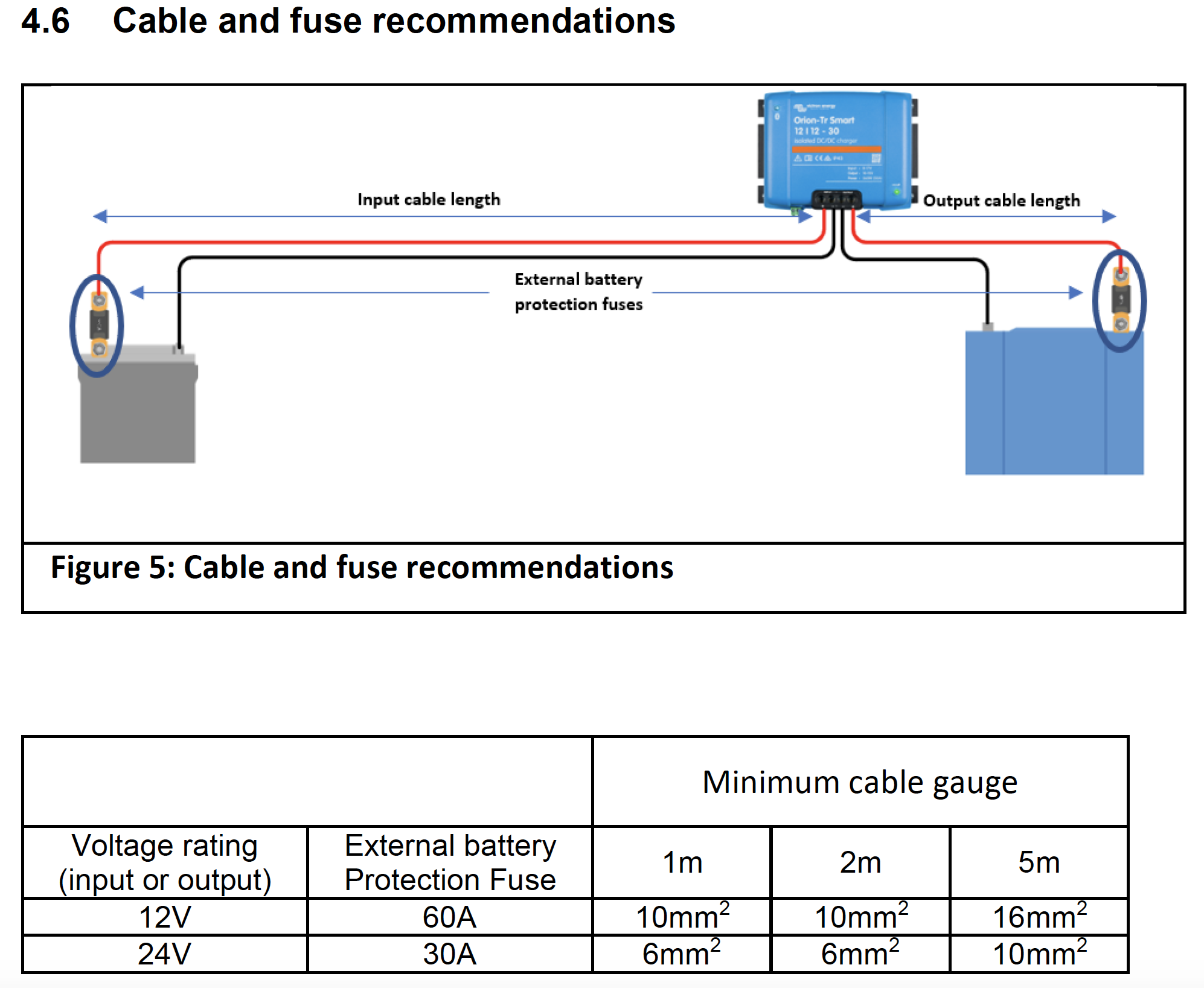I just purchased a new Orion Tr-Smart 12/12/30 Isolated DC-DC charger to install in my RV. The installation is complete and the unit is operating properly, but I am confused by the fusing recommendation in the manual. It calls for a 60 amp fuse, but the charger is only a 30 amp charger so why are both the input and output rated for a 60 amp fuse. I would have thought that 40 or 45 amps would have been more appropriate.
I asked the vendor about it but they just replied that 60 amp was the maximum size for the fuse and I have never purchased equipment with a fusing requirement where the fuse size was not the minimum fuse size, not the maximum.
Any information would be helpful. Thank you.

